Occlusal Splint Cairns
One way of treating TMD is by utilising an occlusal splint.
Temporomandibular Disorder (TMD) is a very common affliction that may affect any age group’s dental health, and a thorough diagnosis is required to differentiate it from other cranial and facial pain conditions, such as tension type headaches and migraines. These latter two may coexist with TMDs. As a result, your dentist may recommend an occlusal splint.
Why have you been recommended to have an occlusal splint?
An Occlusal Splint (also known as a TMJ splint) is a splint worn on the upper teeth that is generally made from acrylic resin or 3D printed materials like medical device nylon which is designed to reduce or eliminate symptoms that come from the TMJs (Temporomandibular Joints) and/or the 9 pairs of muscles (Masticatory Muscles) that are associated with jaw movement, chewing, swallowing, speech and various social functions.
This form of dental treatment is designed to protect your teeth, and wearing the splint normally occurs on a nightly basis, although it may involve daytime use in some cases. In most cases its primary purpose is to serve as a night guard against damaging the jaw joints and tooth wear, whilst treating TMJ disorders.
How Occlusal Splints can help TMJ pain and TMD
Most TMJ problems are related to the masticatory muscles and not the actual joints themselves.
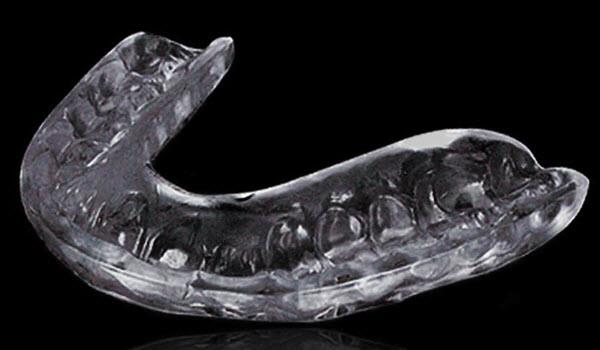
Hyperactivity and subsequent pain (lactic acid build-up) in the masticatory muscle complex is diagnosed by a thorough assessment of the joint and muscles and the facial pain is called Myofascial Pain Dysfunction. The pathology of this joint and muscle complex is called TMD/MPD.
Your TMJs are unique joints in your body in that two bones fuse together in the midline, and the joints themselves are not like a door-hinge that simply rotates unlike some other of your joints.
The TMJs have a complex range of movements including hinge rotation and forward, backward and side-ways sliding.
The position where your Condyles (the head of your lower jaw) sit will vary for you and is determined by two sets of factors.
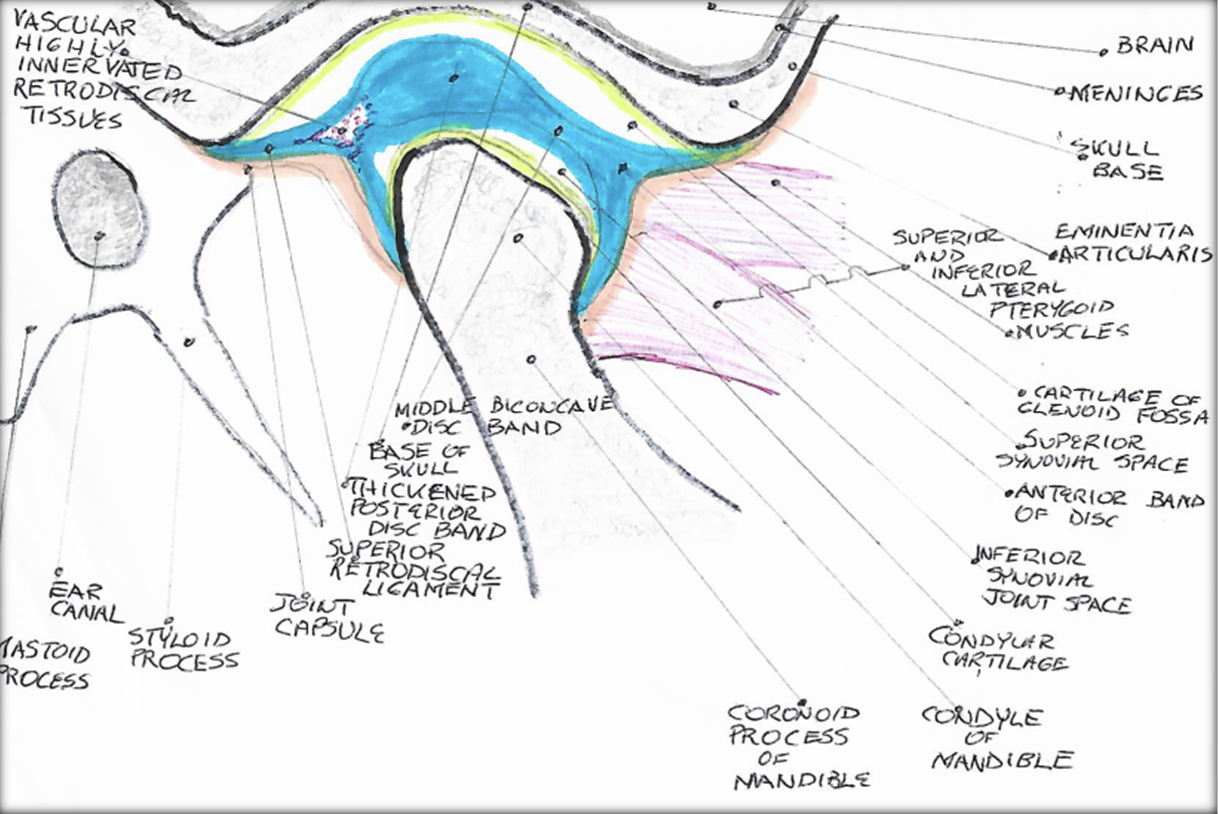
There are two factors that determine where the condyles of your lower jaw (mandible) sit within their joint capsules. Firstly, the position in which your teeth most commonly come together guides the position of the condyles within your TMJs.
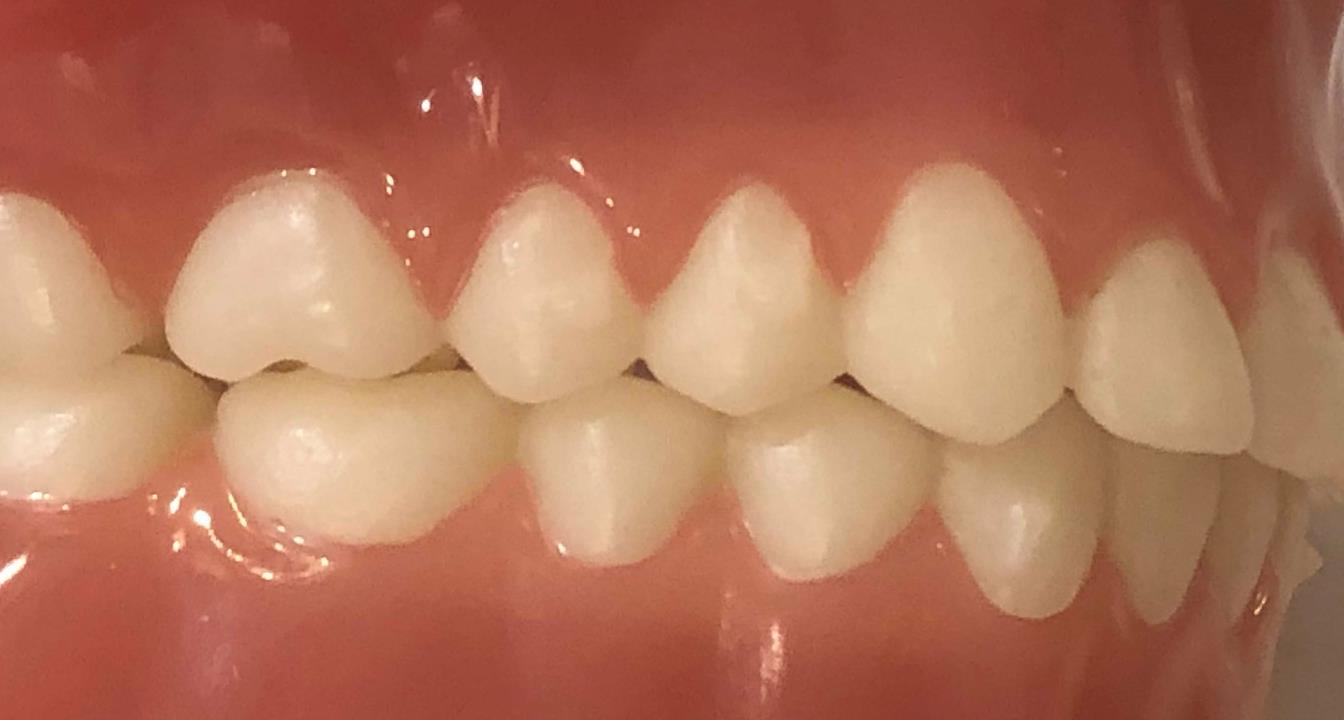
Illustrating how the teeth come together like cogs of gears.
The second factor is the 9 pairs of muscles that all influence the jaw position.
Not all are directly attached to the jaw but all influence the position of the condyle within the temporal fossa (the socket in the base of the house where the joint capsule sits. These muscles are collectively known as the masticatory muscles comprise of:
- Masseters
- Temporalis
- Medial pterygoid
- Lateral pterygoid
- Zygomandibularis
- Posterior digastric
- Anterior digastric
- Sternocleidomastoid
- Trapezius
Examination of these, your TMJs and how your teeth meet and move over each-other is called Occlusal Analysis.
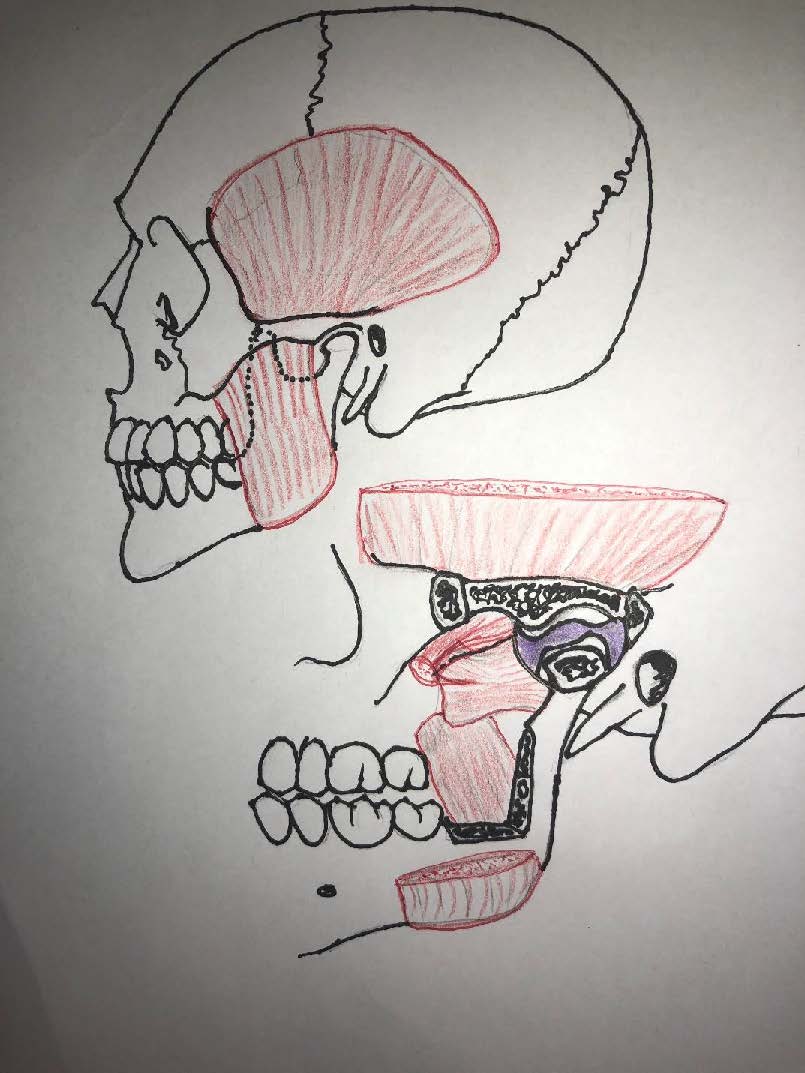
In a comfortable bite position, there is harmony between where the muscles act to seat your condyles and the habitual bite position guides into that identical position.
Many factors will influence where your habitual bite position directs your TMJs including heavy grinding and clenching of your teeth (bruxism), severe tooth wear and tooth shortening, chemical erosion from acidic food and drink and from silent reflux, loss of teeth, fillings and crowns and any removable prostheses worn on your teeth.
When the position of the condyles directed by your bite position is different from where your chewing muscles wants to seat it, the masticatory muscle complex may become very painful (MPD) or the TMJs may develop pathology or internal derangement.
Headaches, facial pain clicking the joints, a feeling of wet soggy ears, hearing dullness, vertigo (loss of balance and a feeling of head-spins) or tinnitus (ringing in the ears), neck and shoulder pain and even migraine may result.
There are a number of different dental splint that may be used to assist one’s oral health. The most common, as below is a Flat-Plane or Michigan Splint. With 5 decades of use of these, Dr Bob Gibbins has formulated a specific design for these to obtain the maximum benefit.
The splint is designed to separate the teeth, so the shape of your teeth no longer guides the position in which the condyles sit within your temper-mandibular joints.
This just leaves the muscles to guide the position of the TMJ Condyles. When left alone to do this, the muscles find their own happy balance with all of them pulling in different directions. A splint is designed to allow the muscles to find that harmonious position which usually results in a great reduction in the pain and symptoms of TMD/MPD and alleviates most if not all the symptoms.
Once a splint is custom made, and its design must satisfy a number of criteria, a very careful balancing of your bite is necessary when the splint is first fitted for you.
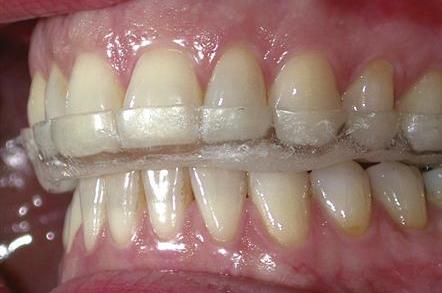
Flat-plane (or Michigan) Occlusal Splint in position
The splint starts working and, in so doing, the position in which your condyles end up during this Occlusal Therapy will change the position of your lower jaw so that your teeth do not meet the splint in the same position after a week or so.
It is then necessary to bring you back to further balance the contact your teeth make with the splint as these jaw muscles come to a happier position.
Depending on how much discrepancy exists in each case between the habitual bite position caused by how your teeth meet each-other and the balanced most relaxed position that your jaw muscles want to seat your TMJs, there may be a significant period of time during which you will need to return regularly to have your splint adjusted.
This is the normal pattern in the successful treatment of TMD/MPD where a number of adjustments are required before the muscles finally come to a happy balanced relaxed position.
At the point where your jaw muscles have found their most relaxed balanced position, there may, by the, be quite a big discrepancy between where your condyles sit with your splint in and when not in your mouth. At this point, it is usually necessary to adjust the teeth so that the teeth guide you into the same position that your relaxed jaw muscles want your TMJs to sit.
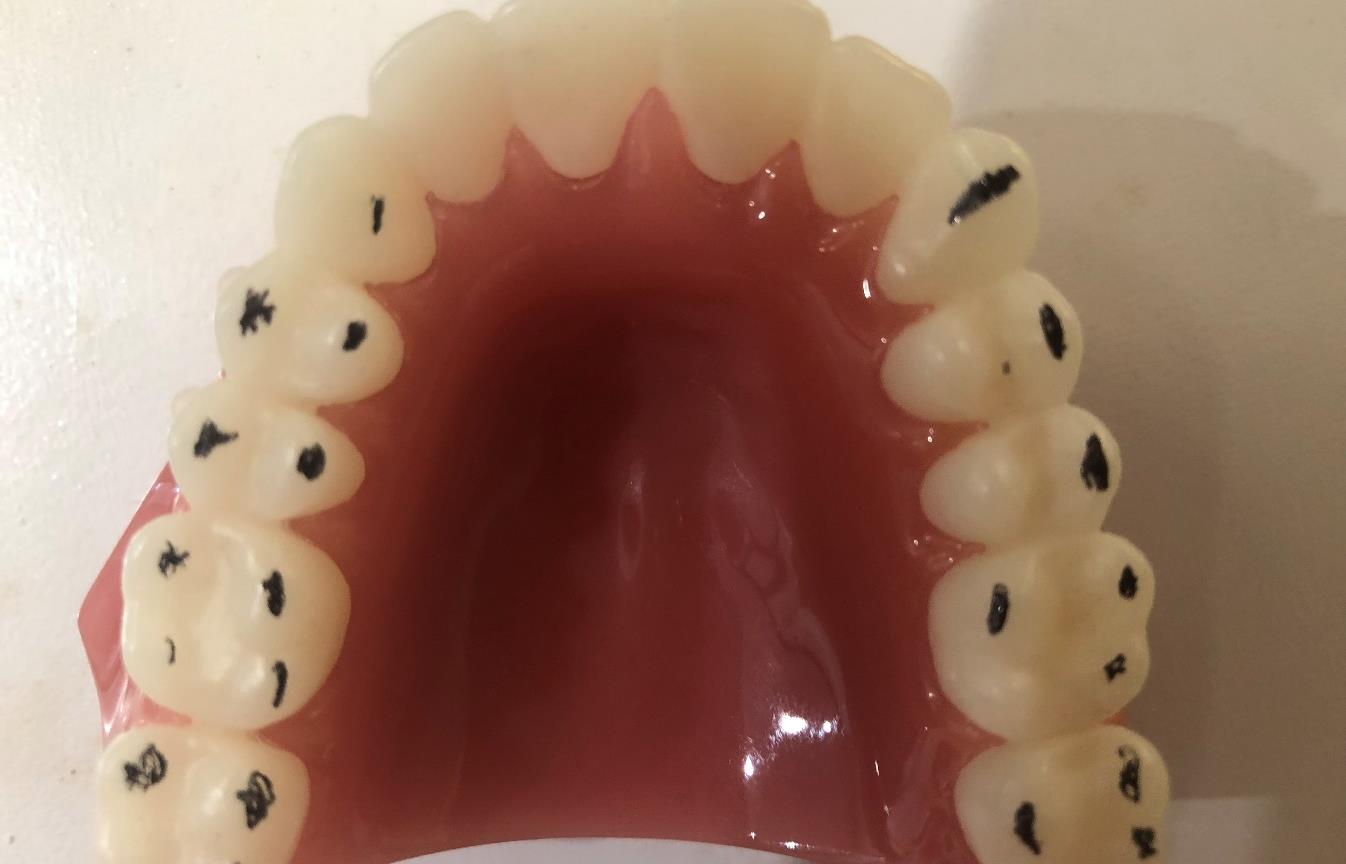
This may be quite a complex procedure which may require a detailed Occlusal Equilibration (ensuring reshaping the teeth so that all those interferences of this harmonious biting position are eliminated) to make those two influencing factors of TMJ position to end up with your condyles both in the same positions of harmony. This may even require extensive rehabilitation of a badly broken-down bite to give your relief from the symptoms of Temporomandibular Disorder/Myofascial Pain Dysfunction.
Occlusal therapy may be quite time consuming and ultimately quite expensive and each adjustment visit has a fee involved. Because it is impossible to predict how many visits Occlusal Therapy is likely to take, giving an exact fee in advance is impossible. Most cases do not require more than a few adjustment visits and the Occlusal Equilibration may not be too complex or require crowns or complex fillings.
Following and during Occlusal therapy, certain exercises for your jaws are likely to be prescribed for you to do regularly.
At times, you may be shown a special technique for releasing the tension in certain of your masticatory muscles.
Other types of Splints, sometimes called Orthotics, may be recommended for you. These may include a Night-Time orthotic like an Olmos ON1 or ON3 splint or a Day-time orthotic like an Olmos OD1 Splint.
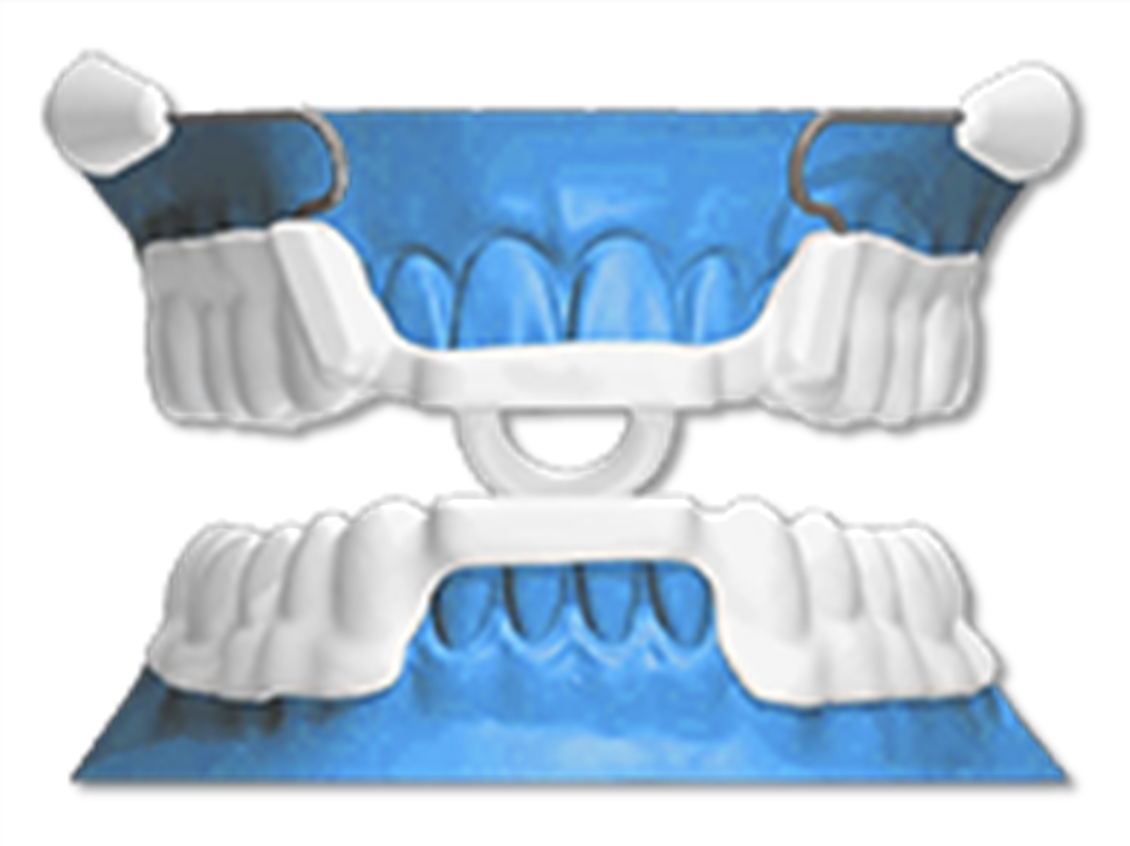
Alternatively, you may be referred to a Physiotherapist with particular interest in TMP/MPD or even to see an Oral and Maxillo-Facial Surgeon for manipulation of your TMJs to break down adhesions within the joint. The OMF Surgeon may occasionally recommend Arthroscopic procedures to remove fragmented meniscus and bone tissues and rarely even TMJ joint replacement.
As an emergency treatment in cases of very acute TMJ Dysfunction where the joint may be very painful or you cannot open your jaw by more than 2 centimetres, you may require a Rescue appliance like an Aqualizer.
At times, you may be recommended to other Specialists for specific variants of Occlusal Splints designed to reposition a meniscus that is misplaced within the joint capsule.
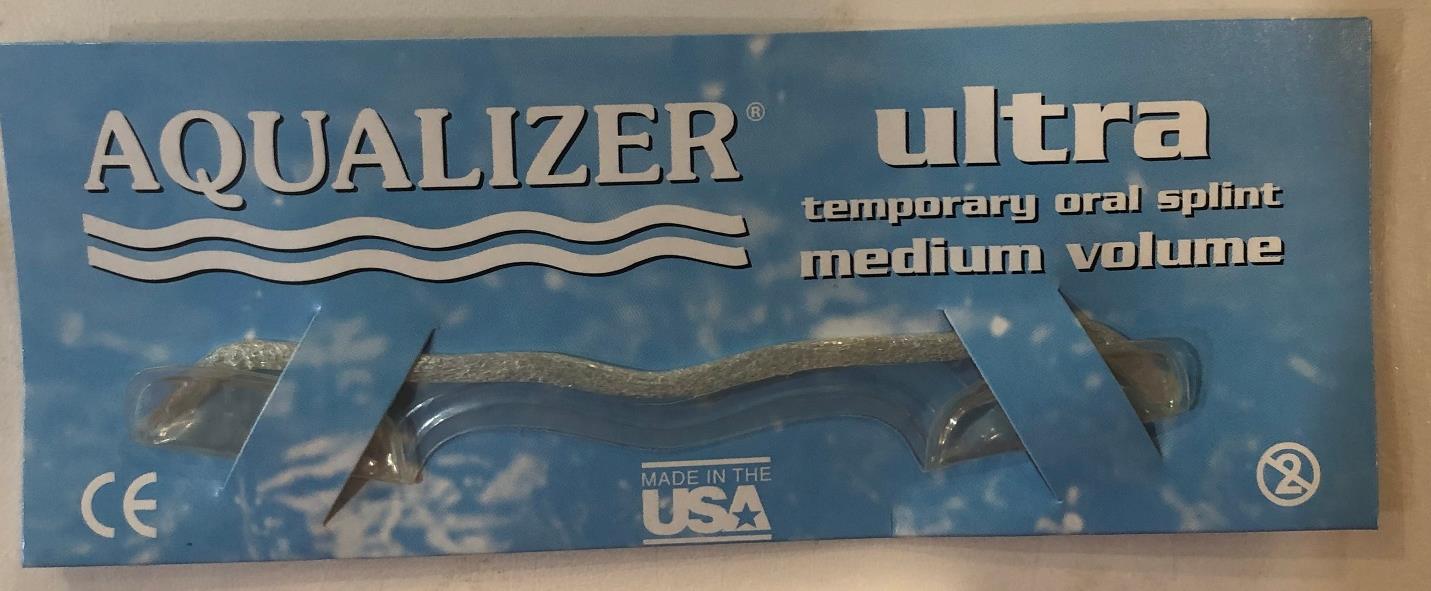
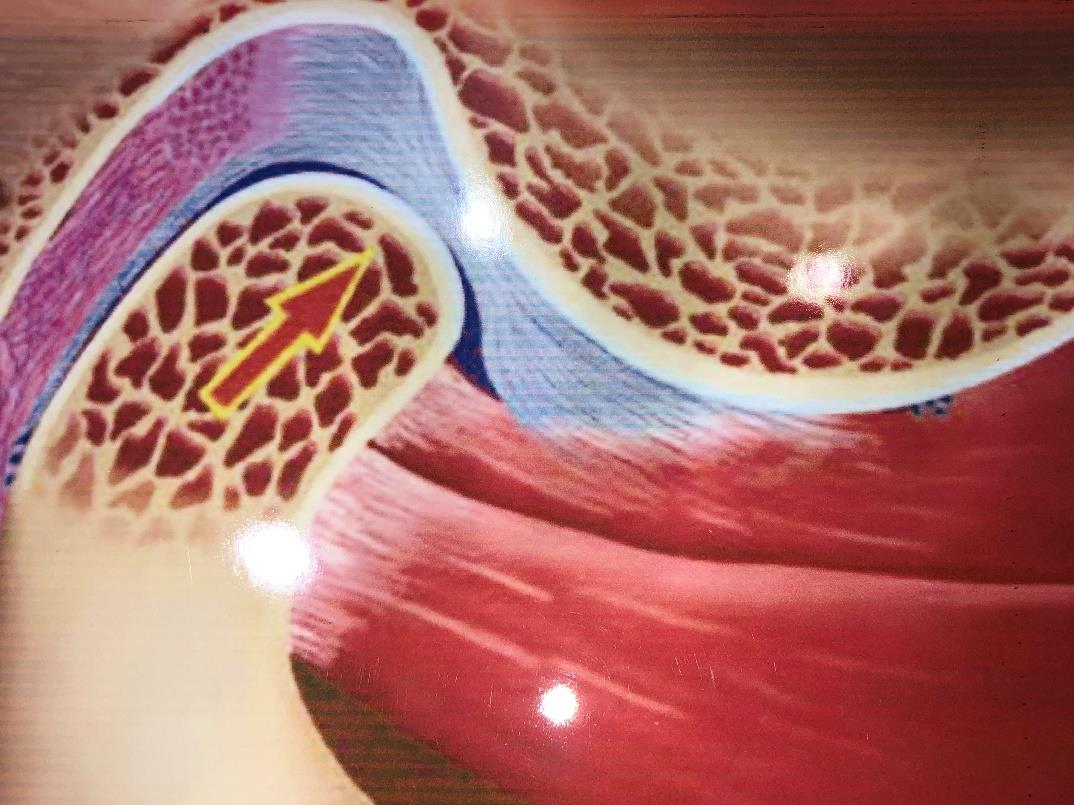
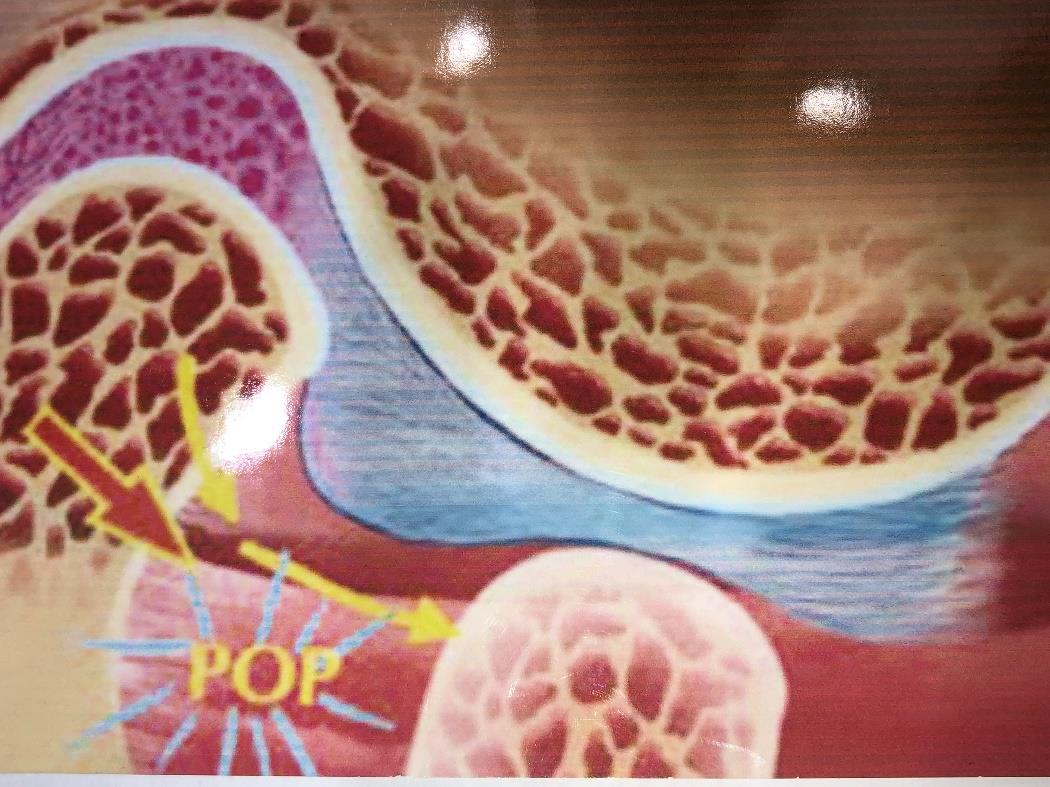
The Clicking or popping noise that commonly occurs with Internal Derangement of the TMJ.
How Future Dental can help
At Future Dental, we can treat you and provide you with a custom-made occlusal splint to ease the symptoms of TMD’s.
Frequently Asked Questions
What is an occlusal splint?
An occlusal splint is a type of dental device that is worn over the teeth to help alleviate problems with the jaw and teeth. It is also known as a night guard or a bite guard.
The primary function of an occlusal splint is to protect the teeth from grinding or clenching, a condition called bruxism, which can lead to tooth wear, jaw pain, and headaches. By creating a barrier between the upper and lower teeth, an occlusal splint can reduce the force of the bite and help prevent damage to the teeth and jaw joints.
Occlusal splints can also be used to treat temporomandibular joint (TMJ) disorders, which are conditions that affect the joint that connects the jaw to the skull. By aligning the jaw in a more comfortable position, an occlusal splint can reduce pain and inflammation in the TMJ and surrounding muscles.
Occlusal splints are typically custom-made by a dentist or dental technician to fit the specific contours of a patient’s teeth and gums. They are usually made from a hard, durable plastic or medical-grade nylon material that can withstand the forces of grinding and clenching.
What are the purposes of using occlusal splints?
The purposes of using occlusal splints include protecting teeth from grinding, reducing pain and discomfort caused by bruxism, treating TMJ disorders, and treating sleep apnea. The overall goal is to improve the health and comfort of the teeth, jaw, and surrounding muscles.
How do you eat with an occlusal splint?
When wearing an occlusal splint, it is important to remove your splint for eating. Rarely do we advise eating with it, and we would give specific directions if needed.
To eat with an occlusal splint, follow these steps:
- Remove the occlusal splint before eating: Most occlusal splints are designed to be easily removable, allowing you to take them out before eating.
- Rinse your mouth: Before putting the occlusal splint back in, rinse your mouth with water to remove any food particles or debris.
- Clean the occlusal splint: After eating, clean the occlusal splint with a soft-bristled toothbrush and mild soap or toothpaste.
- Put the occlusal splint back in: Once the occlusal splint is clean and dry, put it back in your mouth.
- Avoid grinding or clenching: Be mindful not to grind or clench your teeth while wearing the occlusal splint, as this could damage the device and your teeth.
It is important to follow the instructions provided by your dentist for the care and maintenance of your occlusal splint. This will help to ensure that the device continues to function properly and provide the necessary protection and support for your teeth and jaw.



